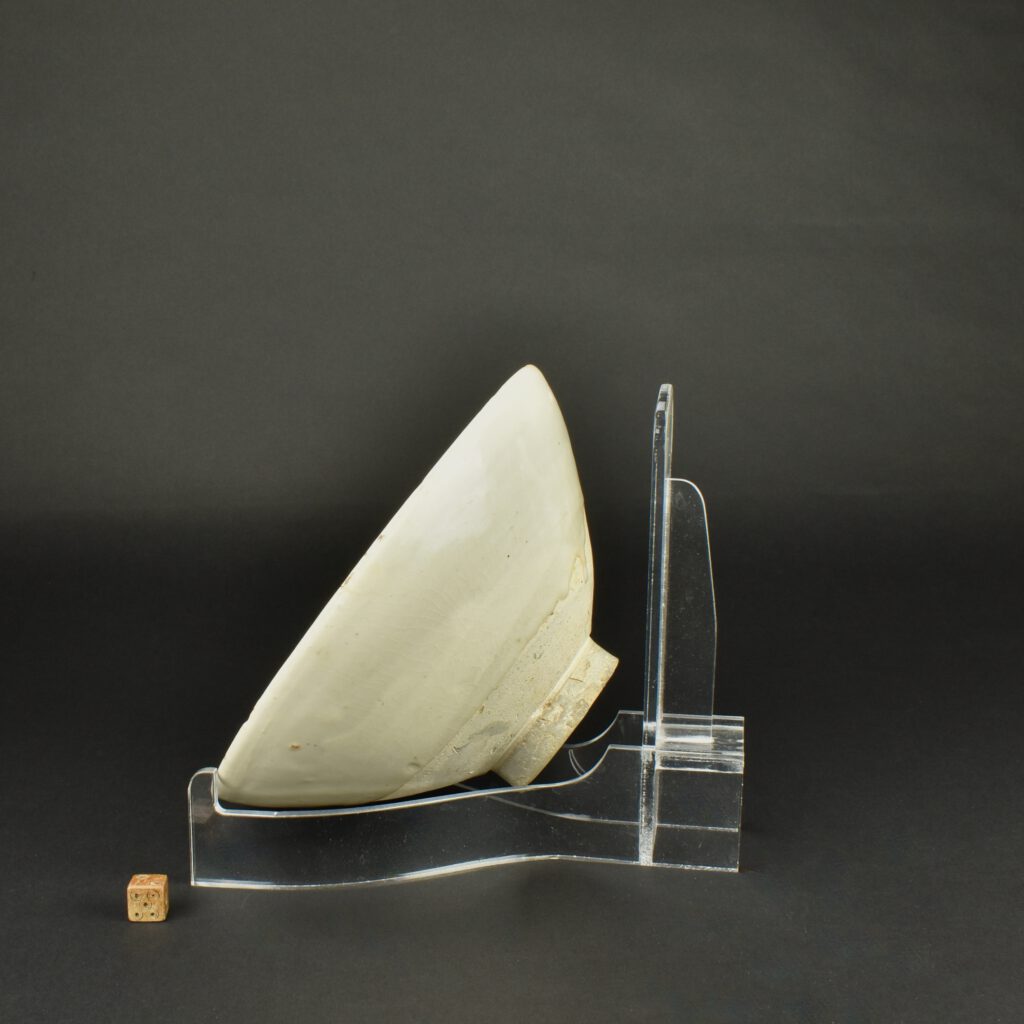
Northern Song Cizhou Ware Bowl
A Northern Song Dynasty Cizhou Ware Stoneware Bowl, Probably Hebei Province. This Cizhou bowl has a grey stoneware body which has been washed with a fine thin white slip, a thicker white slip was added to the bowl, most of this is under the creamy white glaze. The interior has five spur-marks, this shows that another pot was placed inside during firing. Space inside a kiln was precious and every inch counted. The foot is high, it flares outwards from the base to give a thinner footring. The base is rather low, it is probably too deep, meaning the clay was thinner in comparison to the area around it. That caused uneven drying which probably resulted in the firing crack to the base. With an inscribed Japanese wood storage box.
See Below For More Photographs and References.
SOLD
- Condition
- In very good condition. Very minor friting. Kiln fault ; There is an indentation to the interior of the bowl which was perhaps caused by air in the clay, this burst during firing leaving an indentation.
- Size
- Diameter 20 cm (8 inches)
- Provenance
- From a Japanese Collection.
- Stock number
- 26606
Information
Robert McPherson Antiques - Sold Archive - 24944
A Cizhou Lamp

Cizhou Ware :
A freedom of expression exists in Cizhou ware that is unparalleled by other Song dynasty (960-1279) ceramics. This was a direct result of not being under the control of the court; consequently, the liberty to explore and experiment created an innovative range of designs full of flavour and life unique to Cizhou ware. The utilization of enamelled decorations in tones of vivid reds, yellows, and greens on occasional Cizhou pieces placed it centuries ahead of its time as this was not kosher for early court wares. The ware also displays an amazing dexterity in the sketchily incised patterns which have such a sense of carefree abandon that they appear impressionistic. Today, Cizhou ware is prized for its natural appearance which often reveals the potter’s process from the wheel’s rings, to the inner spur marks, to the unevenly glazed base.
The white stonewares of the Tang dynasty (618-906) produced two extremely influential wares; the first, Ding ware, became the official ware while the second, Cizhou, became the “popular ware” among the varying classes. It was Cizhou wares utilization by society that assured its continuance during political and dynastic changes which extinguished other Song wares; consequently, Cizhou ware is still produced today though the wares created during the Song dynasty are considered to possess an unrivalled spirit. Since Cizhou ware embodies a diverse range of wares not confined to a specific location, kiln complex, or style it is difficult to precisely define its characteristics.
The name Cizhou originated from the ancient area of Cizhou, encompassing a broad arc across China, which was first recorded during the Sui dynasty (581-618). However, the location constantly shifted and though the area of Cizhou is mentioned in the Tang dynasty (618-906) and Five Dynasties (906-960), each referred to an altered location.During the Song, Jin (1125-1234), Yuan (1279-1368), and partly into the Ming dynasties (1368-1644) the kiln areas of Cizhou were primarily concentrated in the northern provinces of Hebei, Henan, and Shaanxi. (By Mindy MacDonald).












